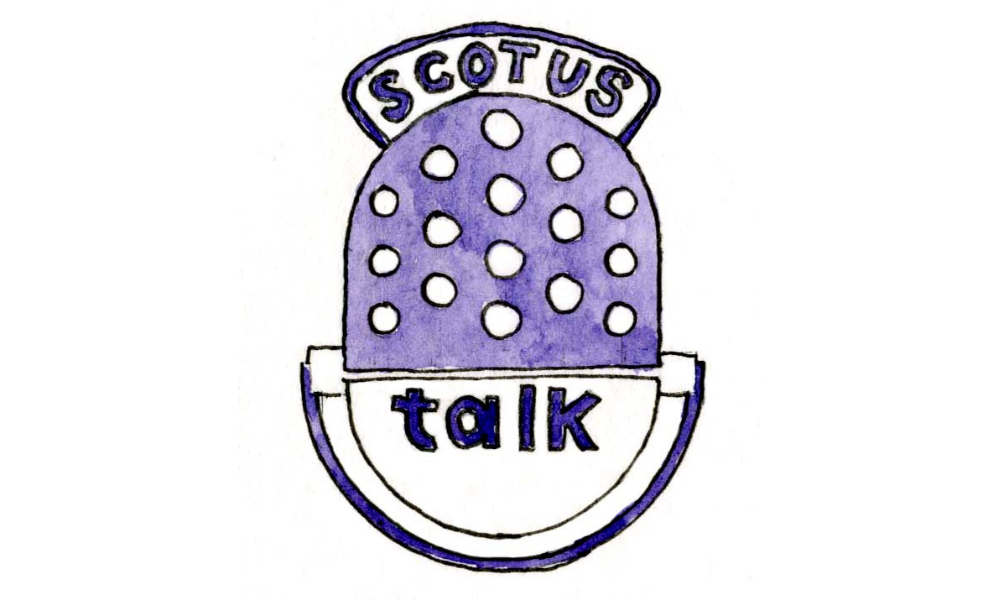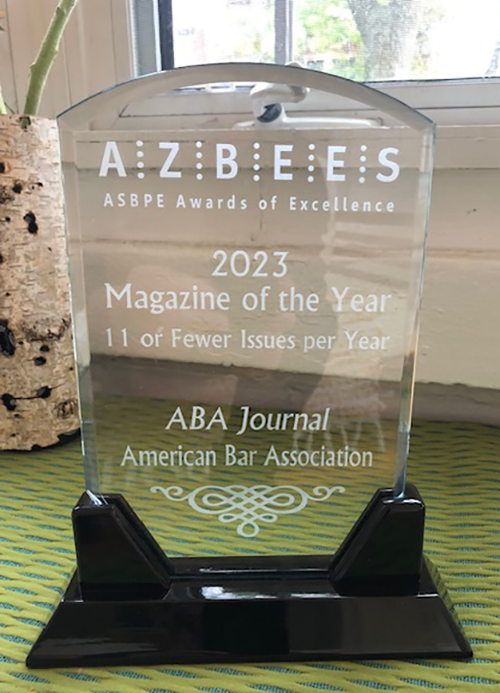Senate Once Again Tries to Address Drug Pricing | McDonnell Boehnen Hulbert & Berghoff LLP
Over the past several years Congress has tried to address high drug prices, with variable success (see “FTC to the Rescue Regarding High Drug Prices and Patents”; “Even More Ill-Conceived Remedies from Congress Regarding Prescription Drug Costs”; “More Ill-conceived Remedies from Congress Regarding Prescription Drug Costs”; and “A Solution in Search of a Problem”). Indeed, Executive Orders stemming in part from the COVID pandemic have garnered more success on this score. But the Inflation Reduction Act reduced the monthly cost of insulin to $35 while other initiatives have had less success passing or having the desired effect even when enacted.
Not to be deterred, the U.S. Senate’s Health, Education, Labor & Pensions (HELP) Committee this past week passed out of committee five bills in this vein: the Ensuring Timely Access to Generics Act of 2023 (S. 1067); the Expanding Access to Low-Cost Generics Act of 2023 (S. 1114); the Retaining Access and Restoring Exclusivity Act (S. 1214); and the Increasing Transparency in Generic Drug Applications Act (S. 775). These will be discussed seriatim below.
1. The Ensuring Timely Access to Generics Act of 2023 (S. 1067)
This bill was introduced by Sen. Jeanne Shaheen (D-NH) on March 29, 2023, co-sponsored by Sen. Susan Collins (R-ME), Michael Bennet (D-CO), Marco Rubio (R-FL), Tammy Baldwin (D-WI) and Mike Braun (R-IN). The bill would amend Section 505(q) of the Food, Drug, and Cosmetic Act (21 U.S.C. § 355(g)) to give the Secretary of Health and Human Services the ability to determine whether a Citizen’s Petition was filed “for the primary purpose of delaying an ANDA application,” and recites a number of factors to be considered in making this determination. These include:
(aa) Whether the petition was submitted in accordance with paragraph (2)(B), based on when the petitioner knew or reasonably should have known the relevant information relied upon to form the basis of such petition.
(bb) Whether the petitioner has submitted multiple or serial petitions or supplements to petitions raising issues that reasonably could have been known to the petitioner at the time of submission of the earlier petition or petitions.
(cc) Whether the petition was submitted close in time to a known, first date upon which an application under subsection (b)(2) or (j) of this section or section 351(k) of the Public Health Service Act could be approved.
(dd) Whether the petition was submitted without relevant data or information in support of the scientific positions forming the basis of such petition.
(ee) Whether the petition raises the same or substantially similar issues as a prior petition to which the Secretary has responded substantively already, including if the subsequent submission follows such response from the Secretary closely in time.
(ff) Whether the petition requests changing the applicable standards that other applicants are required to meet, including requesting testing, data, or labeling standards that are more onerous or rigorous than the standards the Secretary has determined to be applicable to the listed drug, reference product, or petitioner’s version of the same drug.
(gg) The petitioner’s record of submitting petitions to the Food and Drug Administration that have been determined by the Secretary to have been submitted with the primary purpose of delay.
As well as an omnibus provision relating to “other relevant and appropriate factors” to be set forth in an FDA Guidance.
The bill also adds a provision directing (“The Secretary shall”) any such petition “that the Secretary determines was submitted with the primary purpose of delaying approval of an application” be referred to the Federal Trade Commission for investigation.
The bill adds provisions requiring filing of a Citizen Petition “before filing a civil action” to prevent FDA from approving an application under Section 505(b)(2) or 505(j) wherein the petition provides “all information and arguments that form the basis of the relief requested in any [such] civil action.” A Citizen Petition must (again, “shall”) be filed within 60 days from when the petitioner “knew, or reasonably should have known, the information that forms the basis of the request made in the petition or supplement.” Failure to file the petition prior to filing a civil action will result in the court (“shall”) dismissing the action without prejudice for failure to exhaust administrative remedies. The court shall dismiss on the same basis any civil action filed against the Secretary before the Secretary has taken action on the petition.
The bill also removes the exception under current law for biologic drugs and biosimilar equivalents.
Often when Congress proposes to amend a statute is appears that such amendments are to provide clarity or to limit or prevent practices deemed to be abuses. Motivation for these amendments can be understood perhaps with reference to remarks by Senator Collins, one of the co-sponsors, on YouTube.
2. The Expanding Access to Low-Cost Generics Act of 2023 (S. 1114)
This bill was introduced by Sen. Tina Smith (D-MN) and co-sponsored by Sen. Mike Braun (R-IN). The bill would amend Section 505(j)(5)(B)(iv) of the Food, Drug, and Cosmetic Act to provide a 75-day window for a “first filer” generic company to market its product or lose the 180-day exclusivity, which could then go to another generic drug company. The conditions for this substitution require that the alternative filer are set forth to require satisfaction of these factors:
(aa) The approval of such application could be made effective, but for the eligibility of a first applicant for 180-day exclusivity under this clause.
(bb) The applicant of such application has submitted a certification to the abbreviated new drug application that there are no conditions that would prevent the applicant from commercial marketing within 75 days after the date of approval and that the applicant intends to so market the drug.
(cc) At least 33 months have passed since the date of submission of an application for the drug by at least one first applicant.
(dd) Approval of an application for the drug submitted by at least one first applicant is not precluded under clause (iii).
(ee) No application for the drug submitted by any first applicant is effectively approved on the date that the conditions under items (aa), (bb), (cc), and (dd) are all met and maintained.
The bill also amends Section 505(j)(5)(D)(which provides for forfeiture of the 180-day exclusivity period ANDA first-filers to add a Special Approval Status Rule For Certain Subsequent Applicants, that recites:
An application that is approved pursuant to subclause (III) of subparagraph (B)(iv) is deemed to be tentatively approved and to no longer have an effective approval pursuant to such subclause (III) on the date that is 76 days after the date on which the approval has been made effective pursuant to such subclause (III) if the applicant fails to commercially market such drug within the 75-day period after the date on which the approval is made effective. If the applicant of an application approved pursuant to such subclause (III) submits a notification that it can no longer commence commercial marketing within 75 days after the date of approval, as required under subparagraph (B)(iv)(III)(bb), its application is deemed to be tentatively approved and to no longer be effectively approved on the date that such a notification is received. If an applicant does not commence commercial marketing within the 75-day period, it shall not be eligible for a subsequent effective approval for the application under subclause (III) of subparagraph (B)(iv) unless, in addition to meeting each of the conditions in such subclause (III), it submits a certification to its abbreviated new drug application that an event that could not have been reasonably foreseen by the applicant prevented it from commencing commercial marketing and that it has fully resolved this issue. The applicant shall submit notification to the abbreviated new drug application confirming that such applicant has commenced commercial marketing of the drug not later than one business day after commencing such marketing.
The applicability of these provisions is limited to applications under Section 505(j) after enactment of the legislation.
3. The Retaining Access and Restoring Exclusivity (RARE) Act (S. 1214)
This bill was introduced by Sen. Tammy Baldwin (D-WI) and co-sponsored by Sen. Mike Braun (R-IN). The bill would amend Section 527 of the Food, Drug, and Cosmetic Act (21 U.S.C. § 360cc) to close a loophole in orphan drug designation, regarding applicants developing newer versions of an orphan drug and getting undeserved exclusivity to such drugs. The exclusivity provision is amended to be limited to “the same approved use or indication within such rare disease or condition” and a new subsection added that “defines the term ‘approved use or indication’ [to mean] the use or indication approved under section 505 of this Act or licensed under section 351 of the Public Health Service Act for a drug designated under section 526 for a rare disease or condition.” These limitations shall apply to any drug designated as an orphan drug “regardless of the date on which the drug was so designated” or approved.
The bill was motivated, according to Sen. Baldwin, by a decision in the 11th Circuit, Catalyst Pharms., Inc. v. Becerra, that provides incentives for pharmaceutical companies to seek the broadest orphan drug designation they can obtain but to pursue narrow clinical studies for approval. A consequence of these stratagems is that the orphan drug exclusivity holder can preclude competitors from obtaining orphan drug designation for alternative conditions or other patient populations. The bill was introduced in the last Congress (S. 4185) but was not brought to a vote.
4. The Increasing Transparency in Generic Drug Applications Act (S. 775)
This bill was introduced by Sen. Margaret Wood Hassan (D-NH) on March 14, 2023, co-sponsored by Sen. Rand Paul (R-KY), John Hickenlooper (D-CO), and Mike Braun (R-IN). The bill would amend the Section 505(j)(3) of the Food, Drug, and Cosmetic Act by adding that “upon request,” the Secretary shall inform an ANDA applicant whether a generic drug is “qualitatively and quantitatively the same as the listed drug.” If not, on the other hand, the Secretary shall identify to the person requesting the information “. . . the ingredient or ingredients that cause the drug not to be qualitatively or quantitatively the same as the listed drug; and . . . for any ingredient for which there is an identified quantitative deviation, the amount of such deviation.” The Secretary is precluded from changing or rescinding such a determination after submission of the ANDA unless the formulation of the listed drug has changed and “the Secretary has determined that the prior listed drug formulation was withdrawn for reasons of safety or effectiveness; or . . . the Secretary makes a written determination that the prior determination must be changed because an error has been identified.” The bill also requires the Secretary to produce a Guidance, within one year of enactment, “describing how the Secretary will determine whether a drug is qualitatively and quantitatively the same as the listed drug . . .” wherein this clause expressly includes “assessing pH adjusters.” These provisions will take effect on the date of enactment.
The motivation for this bill is to “streamline the approval process for generic medications” and “lower prescription drug prices for consumers” according to Sen. Hassan’s website. The enemy is purportedly “unnecessary red tape” which the Senators perceive to arise because:
[T]he FDA requires certain generic drug manufacturers to demonstrate that they have the same active and inactive ingredients in the same concentration as the reference brand name drug. However, when a generic drug contains the wrong amount of inactive ingredient, the FDA cannot disclose the exact error, forcing manufacturers to engage in an often lengthy guessing game to reach the right balance. This legislation would require the FDA to more clearly identify the specific differences between the generic and brand name drug, thereby streamlining the approval process, helping more generics reach the market faster, and lowering prescription drug prices overall.
5. The Fair Accountability and Innovative Research Drug Pricing Act of 2023 (S. 935)
This bill was introduced by Sen. Tammy Baldwin (D-WI) and co-sponsored by Sen. Mike Braun (R-IN) and Sen. Tina Smith (D-MN). This bill would amend Title III of the Public Health Service Act (42 U.S.C. 241 et seq.) with regard to drug price reporting. The relevant provisions of the bill are a requirement that the manufacturer of a qualifying drug (defined as any drug approved by FDA under Sections 505(c) or 505(j) or licensed under Subsection 351(a) or 351(k) that is not vaccine, has a wholesale acquisition cost of $100 or more per month supply or course of treatment, or is “commonly administered by hospitals”) must submit a report to the Secretary if there is an increase in the price of the drug that results in an increase in the wholesale acquisition cost that is a) 10 percent or more over a 12-month period beginning on or after January 1, 2024; or b) 25 percent or more over a 36-month period beginning on or after January 1, 2024; or (for drug costs for a year or per normal cost of treatment) “exceeds United States median household income beginning on or after January 1, 2024). The report is due not later than 30 days prior to the “planned effective date of the price increase.” The report must disclose (A) the percentage of the planned increase; (B) a justification for the increase; (C) an explanation for the cost; (D) the identity of the initial developer of the drug; (E) a description of the history of the manufacturer’s price increases since approval; (F) the drug’s current list price; (G) the total expenditures for materials, manufacturing, and acquiring and/or licensing patents for the drug; (H) the percentage of total expenditures on research and development for the drug “derived from Federal funds” less (I) total expenditures for research, development, basic and preclinical research, clinical studies, new drug development, pursuing “new or expanded” indications through supplemental applications under Section 505; (J) total revenue and net profit for each calendar year; and (K) costs associated with marketing and advertising for the drug.
Also required for manufacturers “total revenue and the net profit of the manufacturer for each of the 12-month or 36-month periods”; all stock-based performance used to determine executive compensation; and any additional information the manufacturer chooses to provide related to drug pricing decisions.
Failure to comply is subject to a civil penalty of $100,000 for each day the violation continues.
Such reports shall be posted on a public Department of HHS website no later than 30 days after the report is submitted, subject to the restrictions of laws for protecting trade secrets and confidential commercial information.
Finally, the Secretary will provide an Annual Report to Congress, also posted on a public Department of HHS website.
The extensiveness of the financial disclosures mandated by the bill suggest passage will not be easy or without significant opposition.






